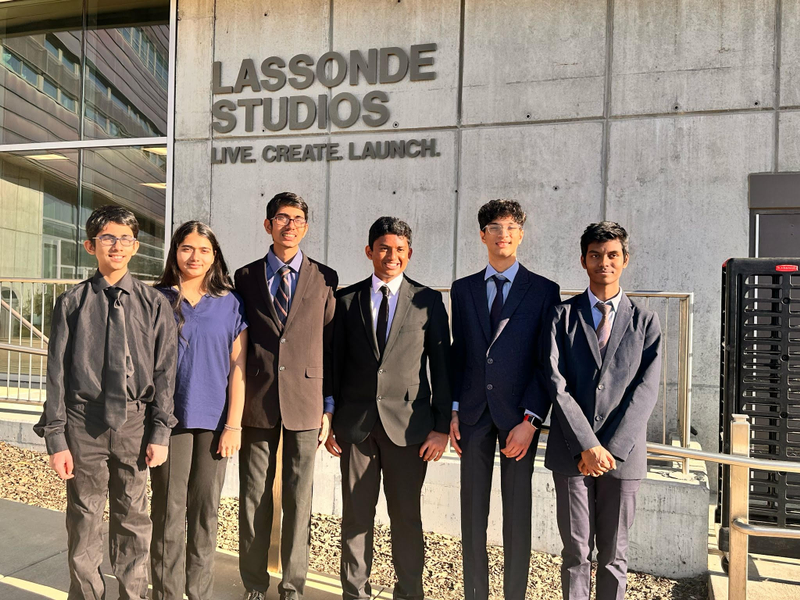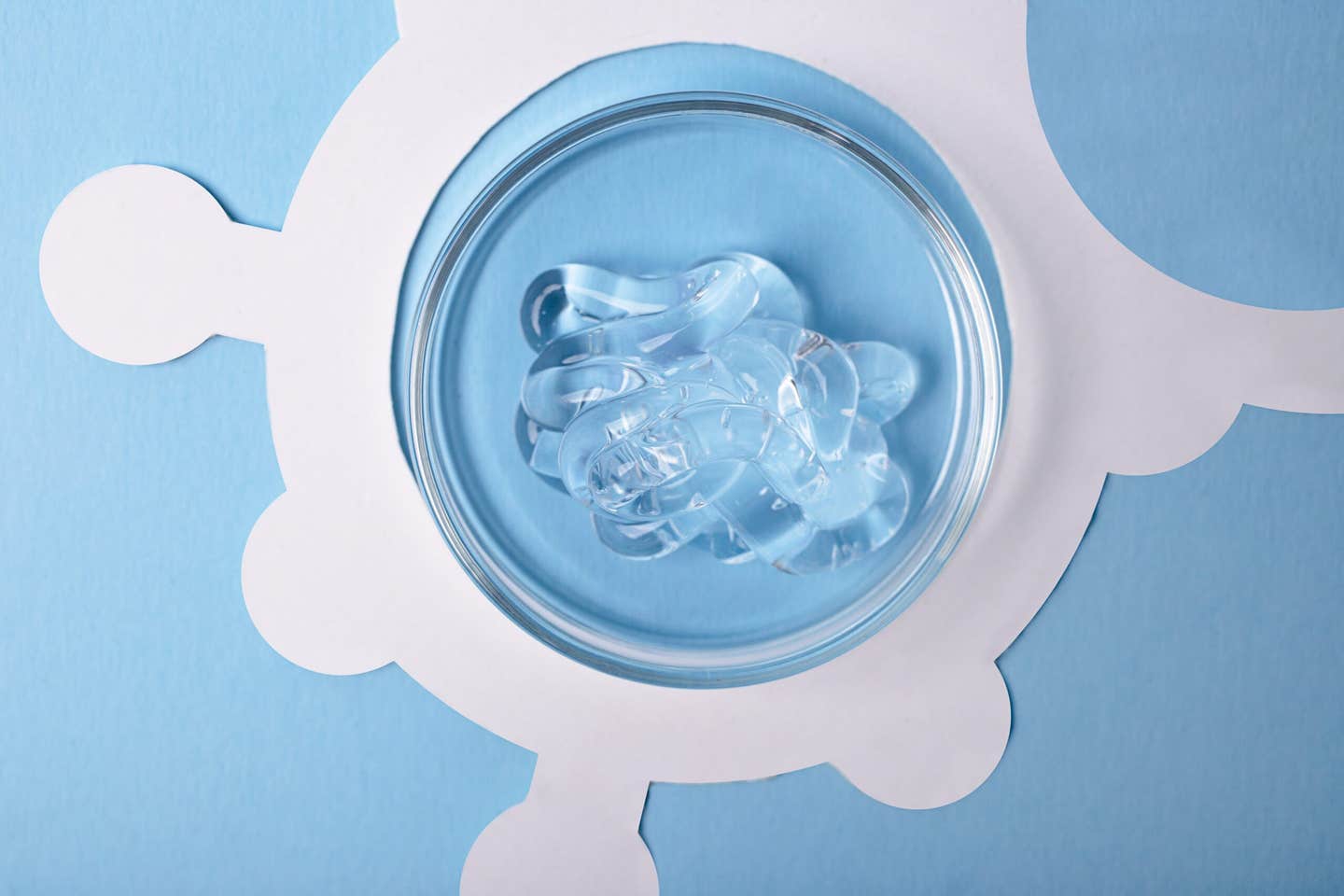Utah teens create award-winning invention to solve microplastic pollution
Utah students create a mobile purifier to remove microplastics from water after a study links plastics in arteries to heart disease.

The team representing Hillcrest High. (Left to Right) Swayam Sanghvi, Shreya Sanghvi, Om Sanghvi, Kevin Siju Eappen, Samhith Vajjala and Sashwath Narayanan. (CREDIT: Bhavi Sanghvi)
A class at a Utah high school is doing something about growing concern about microplastic pollution and turning it into something: something innovative. Their invention, a mobile tool for cleaning microscopic pieces of plastic from rivers and lakes, comes as scientists have found those same particles stuck deep in human arteries, which raised fears of heart risk.
A Student Invention With a Big Mission
Teenagers Sashwath Narayanan, Shreya and Swayam Sanghvi, Kevin Siju Eappen, and Samhith Vajjala of Midvale's Hillcrest High School designed a small boat-shaped purifier that traps and inactivates microplastics in water. The process is done through semi-permeable membranes and organosilanes that trap the particles before using a high-speed suction pump to draw them in.
Unlike most filtration systems that are fixed at one point, their design is portable. "You cannot relocate other systems to some other location, so you have to build a new purification system if you want to use the same product somewhere else," Narayanan said. "Ours is portable."
The group spent months mastering how to solder circuits, code an Arduino microcontroller, and attach it to a Raspberry Pi computer that runs the prototype's onboard app. They tried their design in a bathtub before they were ready to introduce it to the real world.
Their hard work paid off — they won second place and $5,000 in the 2025 Tim Draper High School Utah Entrepreneur Challenge, hosted by the University of Utah's Lassonde Entrepreneur Institute. They also won the most online votes award and housing scholarships to power future innovation.
Today, the students are determined to refine their prototype and work with agencies that spend millions on water purification. They aim to provide microplastic removal at an affordable cost and make it feasible to communities everywhere.
A Dangerous Discovery
The project of the students gains new significance following a 2024 research paper, which revealed that microplastics not only pollute rivers and oceans but might possibly harm the human heart as well.
Researchers in Italy examined samples from the artery plaques of more than 300 patients and discovered that over half of those patients had microscopic pieces of plastic, including polyethylene and polyvinyl chloride, which are the very plastics found in packaging materials, water bottles, and building materials.
Plastic patients were more than four times as likely to have a heart attack, stroke, or die within three years compared to those who were not. Microscopic imaging revealed jagged-edged fragments concealed in immune cells, with the inflamed tissue around them.
Dr. Raffaele Marfella, who wrote the study, warned that the research suggests microplastics may be entering the bloodstream and triggering inflammation — a known cause of cardiovascular disease. "Plastics are not just an environmental problem," he said in the study. "They may be a public health problem."
The Human Cost of Plastic Pollution
Microplastics, less than a grain of sand, are the byproduct of larger pieces of plastic degrading with time. They've been found everywhere — in the oceans below, mountain top atmosphere, and even in the human body. Scientists have found them in lungs, liver, blood, and breast milk.
Though it's not yet known how these particles enter the blood, scientists believe they are derived from food, water, and air contaminated by them. Inside the body, they can get lodged in tissues, induce inflammation, and disrupt normal organ function.
For Hillcrest, it made them see that they needed real solutions. "I thought about how much microplastic was in one plastic water bottle," Narayanan said. "All those bottles end up somewhere, and they are bad for the planet and perhaps for us as well."
Building From Curiosity and Collaboration
Each member of the team added unique skills to the project. Swayam Sanghvi learned about diseases related to microplastics from his doctor mother, and this encouraged him to specialize in health impacts. Eappen and Vajjala added engineering skills, and Sanghvi brothers and Narayanan led programming and designing.
"We did everything ourselves," Narayanan said. "Weekends were spent debugging and testing, soldering wires, and running the code. It crashed a few times, but we didn't give up."
That inability to give up suggests a larger trend among young entrepreneurs tackling environmental and health problems. The Hillcrest team is not just filtering water — they're tackling a root cause that scientists are just starting to understand.
A Step Toward Cleaner Water — and Healthier Lives
Plastic production continues to increase, set to double by 2050. More waste that implies, and with it, more microplastics flowing through ecosystems — and possibly the human body. The students' small-scale purifier could slow down that process by catching microplastics before they get into the food web.
While the 2024 study does not prove that microplastics cause heart disease, it is a clear warning that plastic pollution hurts something other than the environment. It may be coursing through our veins silently.
Narayanan's team and he hope their venture will inspire others to take action — whether that is reducing plastic use, investing in green production, or finding new ways around. "We're going to scale this up into a real business down the line if we can get enough initial capital," he said.
Their water filter may be compact, but its significance is immense: innovation and knowledge can start anywhere — even a high school lab.
Practical Implications of the Research
The 2024 artery study points the finger at how plastic pollution bleeds over from the environment into public health, linking daily exposure to cardiovascular risk.
Projects like the Hillcrest team's purifier show how science and innovation can come together to prevent further harm.
If more students, researchers, and policymakers join forces, the fight against microplastics may move from discovery to real-world action — safeguarding the planet as much as its inhabitants.
Research findings are available online in The New England Journal of Medicine.
Related Stories
- High school student develops inexpensive way to remove microplastics from drinking water
- Revolutionary new plastic fully dissolves in seawater leaving no microplastic waste
- Scientists Discover a Simple Trick to Eliminate Microplastics From Tap Water
Like these kind of feel good stories? Get The Brighter Side of News' newsletter.
Rebecca Shavit
Science & Technology Journalist | Innovation Storyteller
Based in Los Angeles, Rebecca Shavit is a dedicated science and technology journalist who writes for The Brighter Side of News, an online publication committed to highlighting positive and transformative stories from around the world. With a passion for uncovering groundbreaking discoveries and innovations, she brings to light the scientific advancements shaping a better future. Her reporting spans a wide range of topics, from cutting-edge medical breakthroughs and artificial intelligence to green technology and space exploration. With a keen ability to translate complex concepts into engaging and accessible stories, she makes science and innovation relatable to a broad audience.



